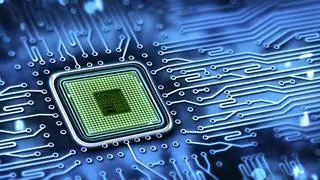To know about a distant object, you need something to start from that object and reach you—a letter, voice, or reflected light. Astronomers learn about distant stars by analysing the electromagnetic radiation, including visible light from the stars and reaching their telescopes or other instruments.
Luckily, the Sun is not as far as the other stars. It is ‘only’ 151 million km. And, again, it sends not just electromagnetic radiation, but also ‘matter’, mostly in the form of particles—positively charged protons, alpha particles (two protons and two neutrons) and a little bit of electrons.
By sending (a) electromagnetic radiation, such as infrared, visible light, ultraviolet, X-rays, and (b) matter, in the form of particles—the Sun is sending us its resume. If we are able to read them, we know who our Sun is.
Aditya L-1 is meant to do precisely that – read Sun’s resume. The spacecraft was successfully launched by India’s ISRO into an Earth orbit and, over the next 125 days, will be slowly ‘pushed’ towards its parking slot—the Lagrange-1 point, 1.5 million km from the earth in the direction of the Sun—where it will have an uninterrupted view of the Sun, 24x7.
With the Aditya L-1 solar, ISRO has ticked many boxes.
The mission is the first of its kind, not only for India on some counts but for the whole world on others.
When the spacecraft reaches L-1, it will make ISRO only the third space agency in the world to park a spacecraft at that point – after US NASA and the European Space Agency.
Aditya L-1 will be the fifth object to be positioned there, the fourth for Sun observation.
(NASA and ESA jointly were the first to put up a spacecraft at L-1 when they sent up the Solar and Heliospheric Observatory (SOHO) into L-1 in 1995. (Against an estimated mission life of 2 years, the SOHO is still alive and functioning even after 27 years.) The Advanced Composition Explorer (ACE), also of NASA, was the second to go to L-1. Again, NASA’s Wind spacecraft was the third—it was launched in 1994, but after being stationed at different places, it reached L-1 in 2004, where it is still functioning. The Deep Space Climate Observatory (DSCOVR) is the fourth spacecraft to be put up into L-1, but it is meant to observe the earth rather than the Sun. And now, Aditya L-1 will become the newest tenant of L-1.)
Only one in the world
Dr Anil Bharadwaj, Director, Physical Research Laboratory, Ahmedabad, observes that the spacecraft is “absolutely unique” because it is only fitted with instruments designed to measure particles, fields and radiation. There is none today that can do all three.
As for particles, there are ground-based observatories, but the particles they receive have already undergone scattering by colliding with other particles in the earth’s atmosphere, whereas the Aditya L-1, being stationed in space, can check out on virgin particles—which can tell more.
As for fields, the spacecraft can look at the Sun’s magnetic field, observe variations in the field and see how the variations impact the Sun’s activities, such as throwing up billions of tons of mass (coronal mass ejection) and sending gusts of solar winds (streaming particles.)
As for radiation, Aditya L-1 is designed to pick up a wide range of electromagnetic radiation from the Sun, from near-infrared to visible light to near ultraviolet to soft and hard X-rays. If you imagine an electromagnetic radiation spectrum to be a string stretched between your hands, Aditya L-1 cuts a big length in the middle.
Technology demonstrator
Aditya L-1 is the first time that India is positioning a spacecraft at Lagrange-1 point. Injecting a spacecraft at this point calls for extreme precision. Once there, it also calls for skillful station-keeping, as the spacecraft would constantly be subject to many pulls and pressures (though not as much as at other, non-Lagrange points.) Apart from generating knowledge, the Aditya L-1 is a veritable technology demonstrator.
The two major instruments – Solar Ultraviolet Imaging Telescope (SUIT) and Visible Emission Line Coronagraph (VELC) -- are entirely designed and built in India by Indian scientists. Interestingly, they are complementary to each other. While the SUIT keeps looking at the central disc of the Sun, the VELC ‘blocks off’ the central disc and looks at the rim—the corona—the way we see the Sun during the solar eclipse. The corona is a million times fainter than the disc, points out Dr Annapurni Subramanian, Director, Indian Institute of Astrophysics. With the disc blocked, VELC can ‘see’ the corona better. Further, since both VELC and SUIT are looking at different parts of the Sun at the same time, scientists can infer the effect of any activity in the Sun on the corona.
Unique data
According to Dr K Sankarasubramanian, Principal Scientist for the Aditya L-1 mission, notes that the seven instruments on spacecraft will generate a “unique set of data currently not available.”








Comments
Comments have to be in English, and in full sentences. They cannot be abusive or personal. Please abide by our community guidelines for posting your comments.
We have migrated to a new commenting platform. If you are already a registered user of TheHindu Businessline and logged in, you may continue to engage with our articles. If you do not have an account please register and login to post comments. Users can access their older comments by logging into their accounts on Vuukle.